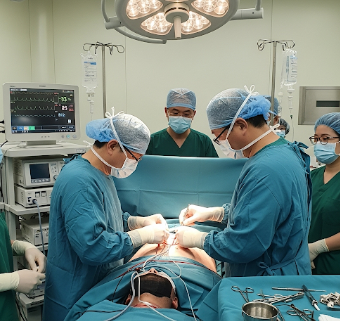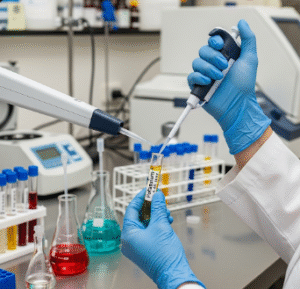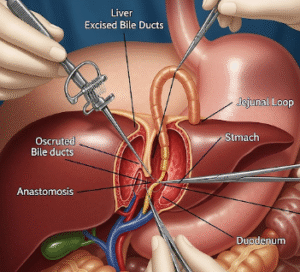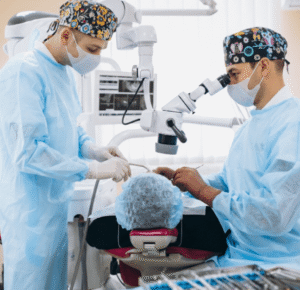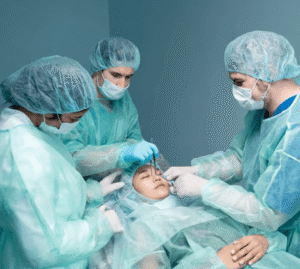Overview
Coronary artery bypass graft (CABG) surgery is a major cardiac procedure performed to restore normal blood flow to the heart in patients with severe coronary artery disease (CAD). The surgery involves bypassing blocked or narrowed coronary arteries using blood vessels taken from other parts of the body, such as the chest, leg, or arm.
In South Korea, CABG is performed in world-class cardiac centers using modern surgical techniques, including on-pump and off-pump methods. Hospitals provide state-of-the-art operating rooms, post-operative intensive care, and comprehensive cardiac rehabilitation, ensuring high success rates, reduced complications, and optimal recovery.
What is Coronary Artery Bypass Graft Surgery?
CABG is a surgical procedure designed to improve blood flow to the heart muscle by bypassing blocked or narrowed coronary arteries.
Key aspects of CABG include:
- Grafting vessels from the patient’s saphenous vein, radial artery, or internal mammary artery
- On-pump surgery: Uses a heart-lung machine to circulate blood while the heart is temporarily stopped
- Off-pump surgery: Performed on a beating heart without a heart-lung machine
- Indications: Severe multi-vessel coronary artery disease, left main coronary artery disease, or heart attack complications
What are the Benefits?
CABG provides life-saving and quality-of-life benefits:
✔ Improves blood flow and oxygen supply to the heart.
✔ Relieves angina (chest pain) and reduces heart attack risk.
✔ Enhances physical activity and overall cardiac function.
✔ Offers long-term survival benefits in severe coronary artery disease.
✔ Highly effective when performed in experienced cardiac centers.
Procedure Details
1) How should I prepare for CABG?
- Medical assessment: Blood tests, ECG, echocardiogram, coronary angiogram, and other imaging.
- Medication review: Adjustments of blood thinners, diabetes medications, or cardiac drugs.
- Fasting: Usually required 8–12 hours before surgery.
- Preoperative counseling: Explanation of procedure, risks, recovery, and post-operative care.
- Lifestyle adjustments: Smoking cessation, controlled diet, and management of comorbidities.
South Korean hospitals provide detailed preparation protocols including psychological support, nutritional guidance, and patient education.
2) What happens during CABG surgery?
- Performed under general anesthesia in a sterile operating room.
- A sternotomy (chest incision) is typically made to access the heart.
- Blood vessels from the leg, arm, or chest are harvested for grafting.
- The surgeon bypasses blocked coronary arteries by attaching the graft vessels above and below the blockage.
- On-pump or off-pump techniques are used depending on patient condition and surgical preference.
- Surgery typically lasts 3–6 hours, depending on the number of grafts and patient complexity.
South Korean cardiac surgeons focus on precision, minimizing tissue trauma, and ensuring graft patency.
3) What happens after CABG surgery?
- Patients are monitored in the Intensive Care Unit (ICU) for 24–48 hours.
- Pain management, cardiac monitoring, and breathing support are provided as needed.
- Gradual mobilization and physical therapy begin within days.
- Post-operative care includes medication management, wound care, and lifestyle counseling.
- Full recovery usually takes 6–12 weeks, with gradual return to normal activities.
Risks / Benefits
Potential Risks:
- ➤ Bleeding or infection at surgical site
- ➤ Heart attack, stroke, or arrhythmias
- ➤ Kidney complications or respiratory issues
- ➤ Graft failure or blockage
- ➤ Complications related to anesthesia
Major Benefits:
- ✔ Significantly improves blood flow to the heart
- ✔ Relieves symptoms such as angina and fatigue
- ✔ Reduces the risk of future heart attacks
- ✔ Enhances long-term survival in severe coronary artery disease
- ✔ High success rates in South Korea’s cardiac centers
Recovery and Outlook
- Immediate post-op: ICU monitoring, pain control, and early mobilization.
- First weeks: Gradual increase in activity, adherence to medications, and wound care.
- 2–3 months: Most patients can resume normal activities, with lifestyle adjustments.
- Long-term outlook: CABG provides durable relief from symptoms, improved cardiac function, and enhanced survival.
South Korean hospitals provide comprehensive cardiac rehabilitation, dietary counseling, and long-term follow-up programs to ensure optimal outcomes.
When To Call the Doctor
Contact your cardiologist or surgeon immediately if you notice:
- ➤ Chest pain or pressure
- ➤ Shortness of breath or difficulty breathing
- ➤ Fever, redness, or drainage from the surgical site
- ➤ Irregular heart rhythms or palpitations
- ➤ Swelling, dizziness, or unusual fatigue
Best Korea Option / Process
South Korea is a leading destination for CABG surgery due to:
- Expert cardiac surgeons with extensive experience in CABG
- Advanced operating rooms with on-pump and off-pump capabilities
- Comprehensive post-operative care and cardiac rehabilitation
- Minimally invasive options for selected patients
- International patient support, including translators, accommodation, and follow-up care
- Affordable treatment costs with world-class quality
Top hospitals for CABG in Korea:
- Samsung Medical Center
- Asan Medical Center, Seoul
- Seoul National University Hospital
- Severance Hospital (Yonsei University Health System)

